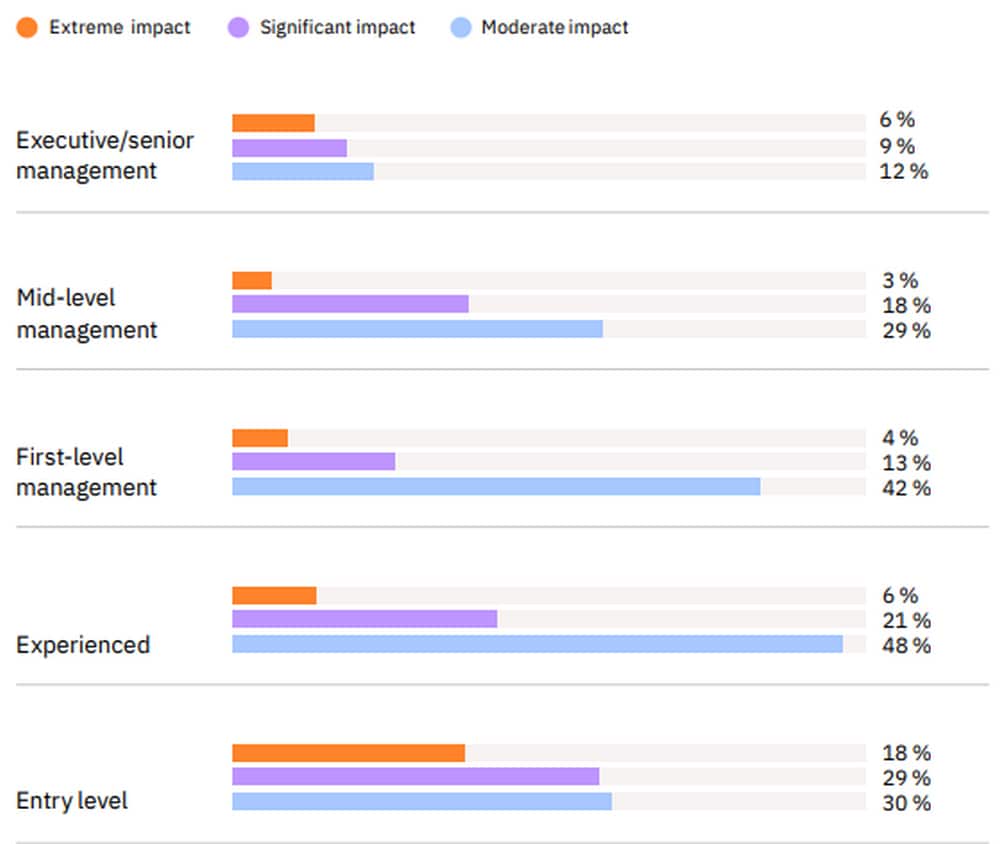Mentions of artificial intelligence (AI) in corporate strategy meetings will, at some point, end with discussions on the impact of the technology on staff. When automation was rolled out years ago, its initial purpose was to take away repetitive processes from human operations with the expectation it would also reduce errors while improving efficiency.
A 2021 Salesforce automation survey in the US reported that among 773 automation users, 89% are more satisfied with their job and 84% are more satisfied with their company as a result of using automation in the workplace. Additionally, 74% say using automation tools helps them get their work done faster.
The operative word here is that automation is a tool that supports or augments the way of usual work. Can the same be said of artificial intelligence? What can business, operational and IT leaders learn from the automation experience to help ‘sell’ the AI value proposition to the workforce?
Improve efficiency and automation
The World Economic Forum (WEF) predicts that an evolution in the workforce is underway and will disrupt 85 million jobs globally between 2020 and 2025. The disruption is forecast to create 97 million new job roles.
An IBM Institute of Business Value (IBV) report claims that AI and automation are creating a new division of labour between humans and machines. In an IBM IBV survey, 4 in 5 executives said generative will change employee roles and skills, with lower-level employees expected to see the biggest shift. No level is immune forcing executives to rethink job roles, skill sets and how work gets done (see Figure 1).
Impact of Generative AI on next-gen employees by 2025

Source: IBM Institute of Business Value
Speaking on the topic, Matt Lyteson, CIO of Technology Platforms Transformation at IBM says every area of an IT department should be looking at AI – both traditional AI as well as generative AI.
He believes this helps accelerate the automation and intelligent operations of an IT department and achieves a broader scale than we’ve traditionally seen.
“Companies should focus on areas that will yield the greatest return with the smallest amount of effort, for example, IT modernisation and IT support, and refer to industry use cases, which are already yielding results for many organisations,” he continued.
Integrating AI into current infrastructure
While it is recognised that the adoption of AI into business will push new demands on the storage and computing needs of the business, one less discussed matter is AI’s impact on network and infrastructure management.
As far back as 2021, FutureCIO earlier discussed the potential impact of AI on IT operations and management. Three years on, Lyteson says AI has been used in IT for some time now, with traditional approaches to AI for network management and detecting potential issues that create disruption.
“There’s also been work around infrastructure resource and capacity management tailored to specific business application workloads. With generative AI, IT departments can develop intelligent automation capabilities more quickly for managing network and infrastructure,” he added.
Automating software maintenance
According to Gartner, the total cost of ownership (TCO) of an IT investment comes down to about 20% on the computer’s base and the remaining will pay for technical support, maintenance and labour costs.
In recent years, the maturing of automation of backend IT operations, including hardware, software and network, has also meant the introduction of AI technologies and practices to support
AI for IT operations simply means applying AI and machine learning to improve IT operations management. The rationale is that automation of routine IT tasks and processes will mean IT can focus on activities that drive IT innovation – as an example.
Lyteson adds that where AI can take IT departments to the next level – particularly generative AI – is by enabling them to develop automation much more rapidly.
“It creates a repeated cycle where it’s easier to develop the automation, that took hours and weeks, within minutes. This accelerates IT modernisation overall opening the door for reinvestment,” he posited.
AI in decision-making
“The biggest opportunity is IT operational data and the application of AI,” opined Lyteson when asked about the opportunities for using AI in data analysis and decision-making within the IT department.
He posited that even if there is centralised logging and an observability toolset across the IT estate, parts of the operational environment are likely not included.
He suggested that starting with the data lake and data fabric, IT departments can derive intelligence through a combination of traditional AI and generative AI. For example, when is the best time to make a change to the network? This simple request typically takes many hours of brain power to determine the best window and risk for the change.
“AI can look at the risk of change based on various factors: the reputation of the team performing the change; the state of the network; any overlapping changes already scheduled; and other corporate events that are on the calendar. AI can help make recommendations like this, aiding in decision-making,” he elaborated.
AI in predictive maintenance
The pandemic has forced organisations to question the extent to which they can extract value from current capital investments. This extends throughout the lifecycle of all equipment used by the business, including maintenance and upkeep.
Lyteson says hardware, predictive maintenance, and software systems have used traditional AI for several years. “IT departments should consider if traditional AI is delivering the results needed or if there is an opportunity with generative AI to take it to the next level,” he continued.
AI in service and support
Asked what the potential uses of AI in customer support and service desk operations within the IT department are, Lyteson pointed out that customer support and IT support via service desk are two fantastic use cases for generative AI.
He noted that with customer support, there are interactions with the consumer that go a few steps beyond self-service. “We can easily provide end users access to guidance to resolve issues on their own before contacting a service desk,” he explained.
He suggested that with the service desk, support agents have access to generative AI to answer questions on how to resolve issues. “This has the potential to drastically reduce the amount of time to resolve issues as well as improve the productivity of support agents. There is also the opportunity to translate speech or chat and interpret it in real-time to quickly identify solutions to recurring issues,” he outlined.
Improving IT service management
Long before AI became a fashionable term to use, chatbots were in place to augment contact centre agents in the provision of helpdesk services. Today, AI-powered solutions can be integrated into the helpdesk practice to improve the resolution – at the very least, AI-assisted helpdesk can prevent IT support personnel fatigue.

“Change risk analysis with AI, incident similarity matching, and incident summarisation are areas where IT service management and incident response are evolving with the advent of generative AI.”
Matt Lyteson
He added that this will be even more impactful as organisations stitch together heterogeneous data that makeup IT estates in real time to detect things before they become issues. “There are additional cases where solutions for repeated incidents are more attainable with generative AI compared to legacy knowledge-based search tools. Overall, this improves efficiency and efficacy of IT service management,” he concluded.
AI in AppDev and testing
Whoever said software development is easy must have been drinking from the low-code/no-code water cooler. While writing code can become mundane quickly, debugging and testing applications opens a can of worms, ranging from poor code quality to complex dependencies.
Lyteson says before generative AI came to the forefront, there was already auto-test generation, application analysis for modernisation and even rudimentary development of language translation. New generative AI approaches can take it to the next level, offering code assistance for application developers.
“This accelerates time-to-delivery and increases consistency and security if managed properly. With application development of legacy-to-modern language translation – for example, COBOL to Java – it produces real results,” he concluded.
Gartner coined the term artificial intelligence for IT Operations (AIOps) in 2016 referring to it as the combination of big data and machine learning to automate IT operations processes, including event correlation, anomaly detection and causality determination.
As AI continues to mature, no doubt new use cases around its use to support all aspects of IT will reveal itself.





